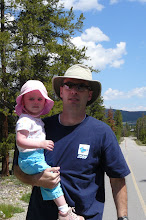Pastoral Theology
Saturday, September 24, 2005 by niebuhrian
My first assignment in my first doctoral seminar is to define Pastoral Theology. A relatively new discipline, Pastoral Theology is unique in that it incorporates a number of other theological, as well as, social science disciplines in its conception. The whole subject is about 50 years old and is still in its infancy. So after four hours of class, I am required to say what I believe something is, without knowing a whole hell of a lot about it.
It is supposed to be a half a page, but I am a little over (surprise, surprise). I won't turn it in until Tuesday, so if you have any comments let me know. If it makes no sense let me know. I am new to this whole create your own definition thing...
Here is Seward Hiltner's definition of Pastoral Theology. Hiltner is credited with being the "father" of Pastoral Theology and one of its earliest and more prolific theologians. I include his definition for comparison's sake.
The quote is direct, with a few parenthetic additions for clarification, from his book Preface to Pastoral Theology written in 1958, published by Abingdon Press. It is out of print but you can find copies for five bucks on the internet, it is worth it if you are interested in Pastoral Theology.
grace and peace
It is supposed to be a half a page, but I am a little over (surprise, surprise). I won't turn it in until Tuesday, so if you have any comments let me know. If it makes no sense let me know. I am new to this whole create your own definition thing...
I believe that Pastoral Theology is something that is better conceptualized than defined. This allows for a fluid and open approach to a theology that has roots in the experiences contained within and outside of its distinct boundaries. Therefore, I offer an image of Pastoral Theology meant to be played with rather than a definition that might constrict.
The image I offer is the helical spring. A visual examination reveals this type of spring as circular, spiraling into three-dimensions with distinct vertical and horizontal components. Furthermore, helical springs generally have gaps between strands of coiled wire giving the sense of both occupied space and openness.
Rather than a simple circular pattern, the spiral offers points of movement whether progressive or digressive. Likewise, Pastoral Theology contains both the vertical, God-human dimension, and the equally important human-human dimension. These two relationships are held within the bounds of the spring, but open and part of the things that affect it. Along this spiral I see the work of Pastoral Theology as containing four points of reference: experience, reflection, introduction to the community, and re-interpretation.
Thus, a helical spring model of Pastoral Theology embodies enduring relationships with marked boundaries, an ability to incorporate new dimensions into its thought and praxis, and relate its distinctive theological ideas through a process of experience, reflection, introduction, and re-interpretation.
Moreover, helical springs have three mechanical functions: compression, tension, and torsion. These also function for our concept. The compression function is generally supportive. The tension function flexibly holds independent pieces together. The torsion function operates by coiling and uncoiling to release stored energy. These mechanical functions help us to understand the under-girding functions of Pastoral Theology. Support, intentional binding of distinct disciplines, and the release and retraction of knowledge and experiences are the pieces from which the work of Pastoral Theology rises.
Here is Seward Hiltner's definition of Pastoral Theology. Hiltner is credited with being the "father" of Pastoral Theology and one of its earliest and more prolific theologians. I include his definition for comparison's sake.
Pastoral Theology is... that branch or field of theological knowledge and inquiry that brings the shepherding (defined as healing, sustaining, and guiding) perspective to bear upon all the operations and functions (defined as communicating the gospel and organizing the people) of the church and the minister and then draws conclusions of a theological order from reflection on these observations.
The quote is direct, with a few parenthetic additions for clarification, from his book Preface to Pastoral Theology written in 1958, published by Abingdon Press. It is out of print but you can find copies for five bucks on the internet, it is worth it if you are interested in Pastoral Theology.
grace and peace
